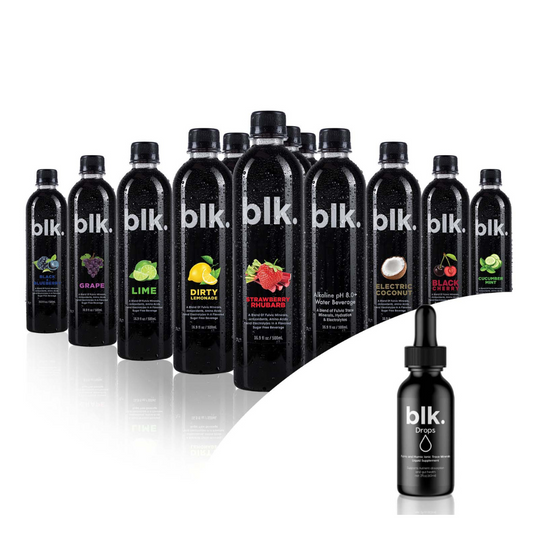
30-Day Full-Body Workout Challenge
This Article Elaborates On The Following:
- The benefits of a full-body workout
- How to prepare for a 30-day full-body workout challenge
- The best 30-day full-body workout challenge to try
A 30-day full-body workout challenge is just what you need to transform your physique and fitness. Full-body workout challenges are an excellent way to build strength, burn fat, and improve your overall fitness in just a month. The following full-body workout challenge plan for 30 days is designed for athletes and gym goers to take you several steps closer to achieving your fitness goals.
Understanding Full-Body Workouts
A full-body workout is intended to target and strengthen all body parts through cardio, strength training, and flexibility exercises. While no one workout can exercise all body elements, combining these different kinds of exercises into a full-body workout can achieve the desired results.
Benefits of A Full-Body Workout Challenge
Full-body workouts provide a wide array of benefits, as follows:
- Improved cardiovascular health.
- Weight loss and Toned muscles
- Increased muscle strength and endurance.
- Increased muscular flexibility and balance.
- Boosted metabolism and weight loss.
Preparing For The Challenge
Before beginning your one-month full-body workout challenge, you must prepare yourself physically and mentally. Preparing for the full-body workout challenge involves setting SMART goals, which you are open to reviewing over the 30 days.
You also need to set realistic expectations of what you seek to achieve since setting too high expectations may lead to discouragement and quitting during the challenge.
Lastly, you also need to create a workout plan and schedule that can guide you throughout the challenge. This involves pre-determining what exercises you will be doing on a particular day and when you will be exercising.
The 30-Day Full-Body Workout Challenge
Here is a detailed description of what you will do daily for the 30-day full-body workout challenge. Remember to take a 2-day break after every five days of exercise to restore your energy and gear up for the next week’s training.
Week 1: Upper body
The first week involves working out your upper body, which includes your hands, chest, abs, and core.
Day 1: Push-ups and chest exercises
Push-ups and chest exercises are excellent for working out your chest muscles, forearms, and biceps. There are different kinds of push-ups with different intensities depending on your level. Intermediary levels can include the diamond push-up, where you put your hands in the shape of a diamond as you work out. The advanced level candidate can include the jumping push-up, where you jump and land on your arms and feet every time you bring your body up.
Day 2: Back exercises
Considering that you do not want to exert yourself too much in your first week, pull-ups are the best back exercises. All you need to do is find a strong bar to carry your weight and pull your body up for a number of reps, taking only short breaks between.
Day 3: Shoulder exercises
In your first week, you should attempt light shoulder exercises, only increasing in intensity if they are too easy for you. A good example is the plank shoulder taps. In plank position, lift one arm to touch the adjacent shoulder and return the arm to position. Alternate between arms for as many reps as you can.
Day 4: Arm exercises
Most upper body exercises target multiple muscle groups(triceps, biceps, deltoids, pectorals) in the body. For the 4th day, you can repeat diamond push-ups, plank shoulder taps, ordinary push-ups, and triceps dips to work on your arms.
Day 5: Core exercises
The best core exercise for the first week is sit-ups, which are easy to perform and require no equipment.
2-Day’s Rest
This is the first 2-day rest period. Take time to relax and regain energy for the next week.
Week 2: Lower body
Day 8: Squats and leg exercises
Lower body exercises such as squats are good for putting extra weight on the legs, calves, and glutes for increased resilience and muscle growth.
Day 9: Lunges and leg exercises
On the seventh day, alternate between squats and lunges, which will help you build muscle growth on the glutes, quadriceps, hamstrings, and adductors.
Day 10: Deadlifts and back exercises
As you continue advancing your exercise routines, you can go to the gym and incorporate a deadlift into your back exercise regimen. Consult your trainer on which weights will be good for you to avoid injury.
Day 11: Hip exercises
On the ninth day, you can bring back squats and lunges, which are excellent workouts for the hip region.
Day 12: Core exercises
Follow the core exercises set for Day 12
- Planks
- Sit-ups
- Russian Twists
- Crunches
2-Days Rest
The second rest period is good for reflecting on your progress and goals as it is the midpoint of the workout challenge.
Week 3: Full-body workouts
Day 15: HIIT workout
High-Intensity Interval Training, or HIIT, is a series of workouts that demand intense energy with only short rest periods. These exercises include:
- Jump squats
- Push-ups
- Burpees
- Mountain climbers
- High knees
- Plank jacks
- Skater jumps
- Bicycle crunches
Day 16: Plyometric exercises
Plyometrics is an intense exercise that focuses on explosiveness. They are excellent for increasing athletic performance, especially in sports that demand jumping and short sprints. Some exercises to try out include:
- Squat jumps
- Burpees
- Mountain climbers
Day 17: Bodyweight circuit
Bodyweight circuits are a series of exercises that only demand your body weight. They include lunges, burpees, wall sits, and push-ups. You can incorporate plyometrics to make the exercises explosive.
Day 18: Tabata workout
Tabata workouts are a series of workouts that alternate between 20 seconds of intense workout and 10 seconds of rest for eight rounds. In these HIIT workouts, you can incorporate any full-body workout you want to perform for the day, provided you exert yourself and stick to the time limits.
Day 19: Core exercises
Complete the week with the core exercises you tried in week 2, only with increased reps.
2-Day Rest
Take this period to prepare for the intensity of the last week of training.
Week 4: Advanced full-body workouts
Now that you have gotten to the fourth week of the challenge, expect even more intense workouts.
Day 22: Resistance band exercises
Using a resistance band, increase the intensity of some of the workouts you are used to, including squats and push-ups. Remember to find a resistance band that is not too hard for you to avoid injury.
Day 23: Kettlebell workout
Kettlebells are a type of weight you can find in a well-equipped gym. While holding the kettlebell at chest level, perform the following series of exercises:
- Squats
- Swings
- Lunges
Day 24: TRX exercises
TRX is trending and uses a combination of bodyweight training and resistance bands for workouts. You can contact your gym instructor for a detailed explanation of using the TRX handles for your workout.
Day 25: Dumbbell exercises
Dumbbell exercises are pretty straightforward. Lift the dumbbell, control the weight, and do not swing your body as you perform the routine.
Day 26: Core exercises
Week 4 core exercises are bound to be more intense. You can increase your reps to reflect the advanced stage of the workout challenge.
Day 27-Day 28: Cardio Exercises
The final two days of the challenge are critical as they involve cardio exercises to work on your heart and entire cardiovascular system. Cardio exercises to incorporate include:
- Short sprints
- Jumping jacks
- Rope jumping
- Jogging
2-Days Rest
After completing your 28 days, the final two days of rest will allow you to evaluate the progress of your workout and consider whether you attain your goals. The rest is also critical especially if you want to return to your regular workout routine.
Conclusion
Workout challenges turn a very tiring and demanding experience into a fun activity. Try out the 30-day challenge discussed above to experience an exciting increase in muscles, endurance, and general body fitness.
Frequently Asked Questions
-
How often should I do a full-body workout?
-
Can I do a full-body workout at home?
-
How many rest days should I take during the 30-day challenge?
-
Can I still do the challenge if I have a previous injury?
-
How can I prevent injury during the challenge?




